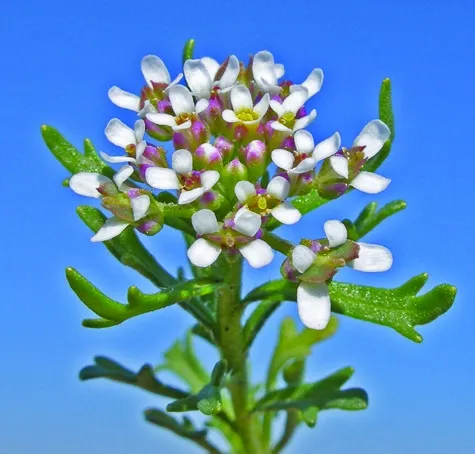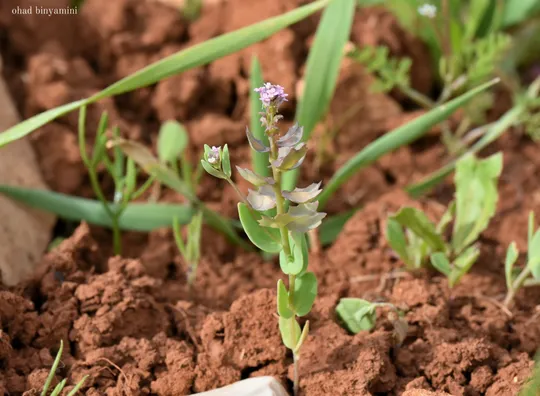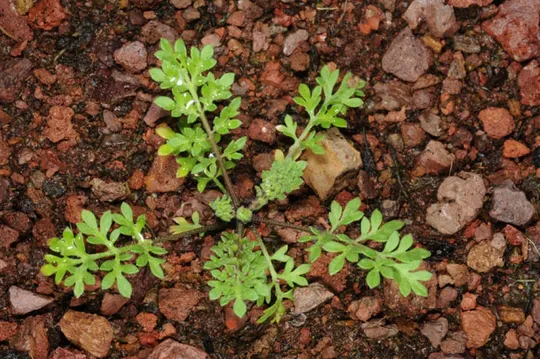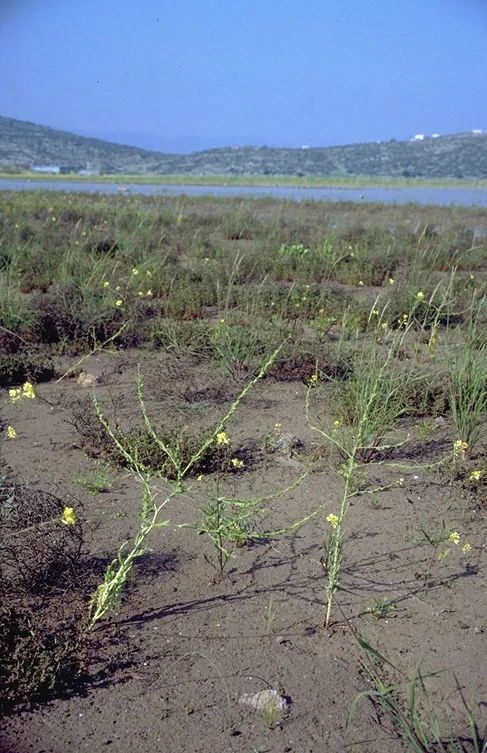Cretan Cabbage
Brassica cretica
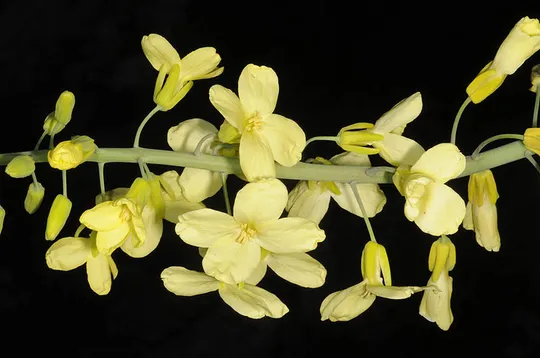
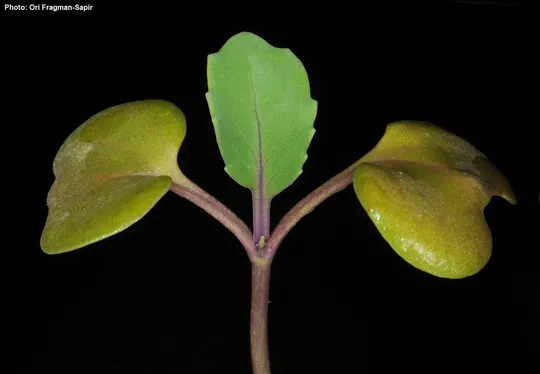
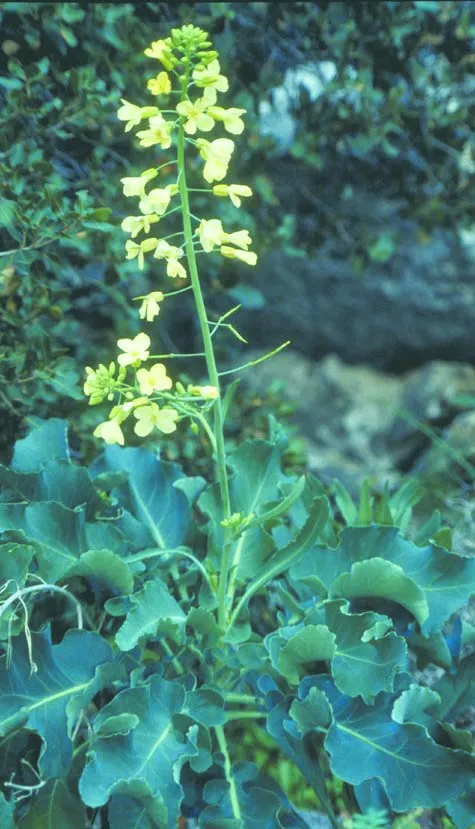
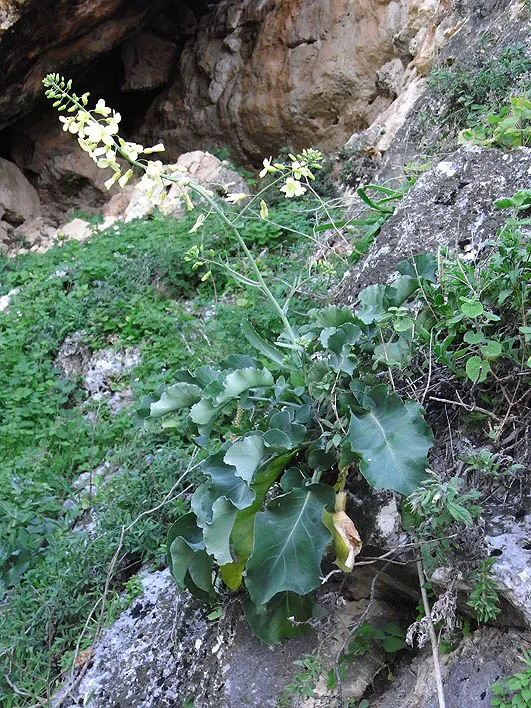
Brassica cretica
is closely related to the ancestral species of the cultivated cabbage (B.
oleracea)
Brassica
cretica grows on a single site in Israel on the Carmel. It was
discovered in 1976 by Hava Lahav at the opening of Wadi Me’arot,
near the Gdi Cave) Cave.
Brassica cretica
grows on the southern cliff of Wadi Me’arot and on rocks at its base on a steep north facing slope at an
altitude of 50 meters, about three
kilometers from the beach. The plants grow both on the vertical cliff composed
of dolomitic limestone in a reef form, right next to the caves of prehistoric
man, and in soil pockets at the foot of the cliff in open woodland. In all
other countries B. cretica
grows only on limestone coastal cliffs facing the sea (a pattern that may indicate
that the shoreline formerly reached the Carmel cliffs at the entrance of Wadi Me’arot).
The genus Brassica consists of 35 species found
mainly in the Mediterranean Basin. Most of them are annuals and only a few are
perennial herbaceous plants. The single known woody species grows in Somalia
and walking sticks are made from it. A few cultivated species are
known for their sharp, pungent mustard oils. In the Middle East there are 11
species of which only three are found in Israel; B. tournefortii, who's fruit,
but not its leaves, is similar to that of B.
cretica and B. nigra
which is not at all similar to B. cretica.
A fourth species, B. napus,
is a naturalized cultivated species from whose seeds oil is produced, which has
been spreading in the Zebulun Valley since 1990.
The Cyprus population of B.
cretica was described in 1977 as an independent species new to science
(Meikle, 1977) but some consider it a subspecies of B.
cretica. The Wadi Me’arot population has not
been studied from the taxonomic and genetic aspects. It may have an independent
taxonomic status, reflecting its geographic isolation and its antiquity.
The discovery of Brassica cretica in the Carmel
is without doubt one of the most impressive botanical findings, as the Carmel
was surveyed thoroughly by Eig, Zohari Feinbron, Tuvia Kushnir and Noah Naftolsky.
•
B.
cretica grows in Israel at a single specific site. All the
efforts of enthusiasts to find other additional sites of the species failed. There
are habitats identical to those found in the Wadi Me’arot cliffs on the Carmel and
in the Galilee, but the species does not grow in them.
•
In 1994, 69 plants
were counted in Wadi Me’arot in an area of 50 x 60 meters. An additional 20 plants were
counted with the help of binoculars in 1981 and 1994 on the cliff. Most of the plants
seem very old but usually produce seeds.
• Wadi Me’arot is a nature reserve, and B.
cretica is protected there.
Brassica cretica
plants should be propagated to attempt to populate another cliff in one of the Carmel
wadis leading to the Carmel coast. The demographics of the population should be
monitored and the conditions of germination and establishment should be studied.
Brassica cretica
grows in the eastern Mediterranean Basin: southern Turkey, the Aegean islands,
Crete (from there the species was first described), Cyprus, western Syria (a single
site) and in the Crimean Peninsula in the Black Sea. It is absent from Lebanon,
but is found in Cyprus, similar to the distribution of Euphorbia dendroides
and Verbascum levanticum.
Brassica cretica is
a perennial plant with a woody base that grows on cliffs. Israel is a single
point at the southeastern edge of its distribution area. In Israel there is
only a single B. cretica
site on the Carmel, with only 69 plants.
Current Occupancy Map
| 1000 squre meter pixel | 5000 squre meter pixel | 10000 squre meter pixel | |
|---|---|---|---|
| number of observations | 0 | 0 | 0 |
| in total pixels | 0 | 0 | 0 |
| Family | Brassicaceae |
| Classification | On the endangered species list |
| Ecosystem | Mediterranean |
| Chorotype | Eastern Mediterranean |
| Conservation Site | Wadi Me’arot on the Carmel |
| Rarity |
1
6
6
|
|---|---|
| Vulnerability |
0
0
4
|
| Attractiveness |
0
1
4
|
| Endemism |
0
0
4
|
| Red number |
1
4.2
10
|
| Peripherality | N |
| IUCN category | DD EW EX LC CR EN VU NT |
| Threat Definition according to the red book | Endangered |
 Based on:
Based on:
